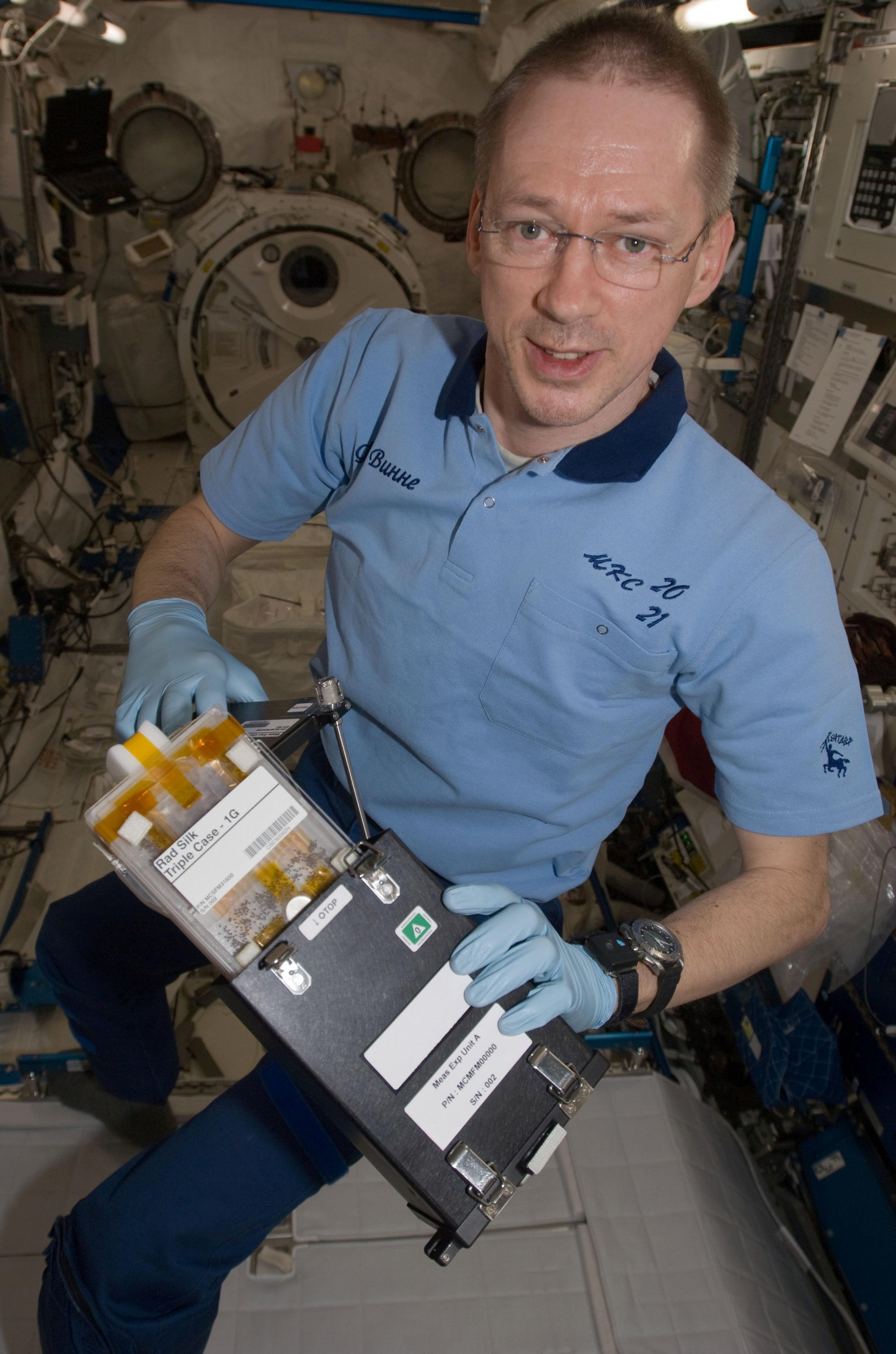- completed
[Rad Silk]
Integrated Assessment of Long-term Cosmic Radiation Through Biological Responses of the Silkworm, Bombyx mori, in Space
- Biology and Biotechnology
ISS Science for Everyone
SCIENCE OBJECTIVES FOR EVERYONE
Integrated Assessment of Long-term Cosmic Radiation Through Biological Responses of the Silkworm, Bombyx mori, in Space (RadSilk) examines the effects of radiation exposure in microgravity on silkworms.
SCIENCE RESULTS FOR EVERYONE
Silkworm eggs are kept on the International Space Station for three months, then placed in either normal or microgravity for six days to resume embryonic development. The results show that microgravity does have an effect on egg development. Eggs are also exposed to radiation. No mutations are seen in the first generation of worms, but are present in the second and third generations, indicating that cosmic rays apparently damage the genes in the first generation and this gets passed down to later generations. Gene silencing, or deactivating, data indicate that individual eggs experienced variations in dose and type of cosmic ray, which means that researchers need to examine radiation’s effects at an individual level not the group as a whole.
Experiment Description
RESEARCH OVERVIEW
- The eggs of the silkworm (Bombyx mori) are used as an indicator for monitoring biological responses to long-term cosmic radiation in microgravity.
DESCRIPTION
Eggs of silkworm Bombyx mori on the Earth in the customized egg cases. After the launch at 5 degrees C, the eggs are kept cooled in MELFI at 2 degrees C for diapause. A day before recovery STS docking, eggs are incubated using CBEF at 20 degrees C for 8 days, then stored in MELFI at +2 degrees C and -95 degrees C, then recovered at +5 degrees C and at -20 degrees C. One control egg case are kept at 2 degrees C without incubation. After recovery, eggs are germinated and analyzed for radiation effects with mutation assay, genetic assay and biochemical assays.
Media Gallery


Applications
EARTH APPLICATIONS
Radiation effects are critical for biological creatures. The data collected during this investigation may lead a greater understanding of how the radiation defense system is affected by different factors from space radiation and microgravity environment. This data could potentially be used to help develop new treatments and preventative measures for radiation effects.
Publications
PRINCIPAL INVESTIGATOR(S)
FURUSAWA Toshiharu [Kyoto Institute of Technology]
Unless specified otherwise, rights to all images belong to ©JAXA



